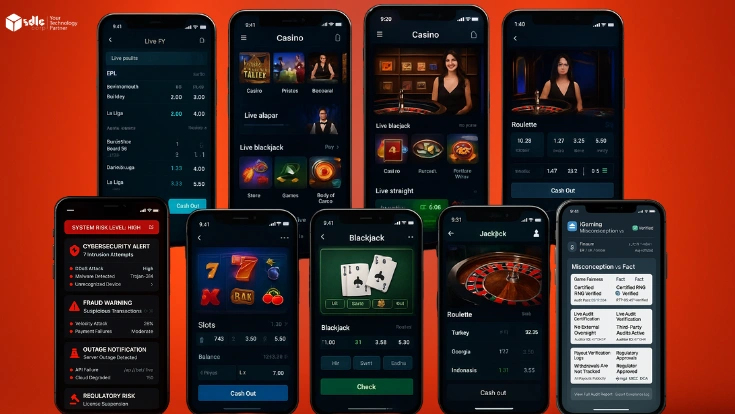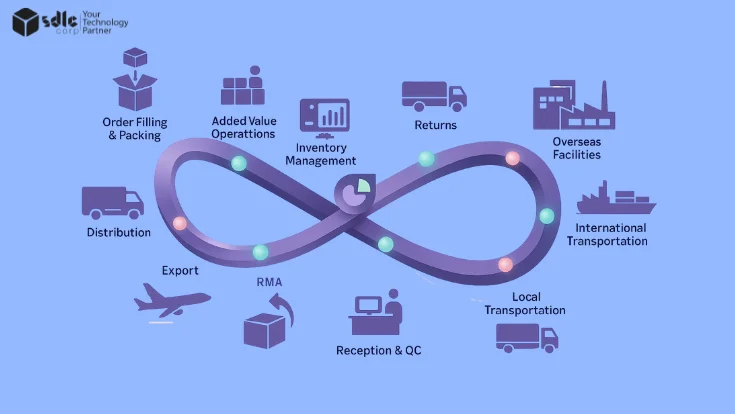Introduction
The Internet of Things (IoT) is more than just a buzzword; it’s a revolution sweeping across industries, connecting devices in ways that once seemed like science fiction. Yet, with this explosion of connectivity comes a surge of challenges—chief among them, the need for networks that can scale, handle vast amounts of data, and do so securely. Enter Directed Acyclic Graphs (DAGs), a cutting-edge solution that’s poised to overcome these challenges, particularly within the realms of cryptocurrency and blockchain development company.
Blockchain Development Company

1. The IoT Landscape: Opportunities and Obstacles
The complexity of the IoT landscape requires a new kind of architecture—one that can handle high volumes of transactions in parallel, ensuring speed, security, and scalability. Directed Acyclic Graphs (DAGs) offer just that, and they are quickly becoming a favored approach among blockchain development companies seeking to innovate in this space.
2. Directed Acyclic Graphs: The Basics and Beyond
In a DAG, each transaction points to one or more previous transactions, creating a web of interconnections. This approach allows for faster validation, as multiple transactions can be confirmed at once, and it cuts down on the computational heavy lifting. The cherry on top? DAGs don’t need miners. Each transaction verifies others, making the process leaner and greener—a significant advantage for cryptocurrency wallet development company that are looking to optimize efficiency.

3. Cryptocurrency and DAGs: A Match Made in Tech Heaven
Imagine a world where your refrigerator orders groceries, your car schedules its maintenance, and entire cities run efficiently on interconnected devices. That’s the promise of IoT. But with this promise comes a problem: How do you manage the flood of data generated by these devices? Traditional centralized systems buckle under the pressure, becoming slow and vulnerable. Even blockchain, with all its decentralized glory, struggles when faced with the sheer scale of IoT, thanks to its linear structure where transactions must wait their turn.
- Transaction Validation: In a DAG-powered cryptocurrency, the process of validation is decentralized and efficient. Unlike blockchain, where blocks are added one after another, DAGs allow each transaction to stand alone while simultaneously validating others. This structure not only speeds up the process but also makes it more secure, as each transaction strengthens the network. This is particularly appealing to cryptocurrency token development companies focused on creating robust and secure ecosystems.
- Consensus without Compromise: Traditional blockchains rely on consensus mechanisms like Proof of Work (PoW) or Proof of Stake (PoS). In contrast, DAGs achieve consensus organically through the process of transaction validation. As the network grows, so does its resilience, making it harder for malicious actors to disrupt.
- Scalability for the IoT Age: DAGs are built to scale. Their non-linear nature means that as more transactions enter the network, the system doesn’t slow down; it speeds up. For IoT networks, where thousands of devices might be communicating simultaneously, this is a game-changer. Blockchain development companies working on large-scale IoT projects are finding DAGs indispensable in creating networks that can handle massive transaction volumes without sacrificing speed or security.
Cryptocurrency and DAGs: A Match Made in Tech Heaven.” The design visually conveys the concept of synergy between cryptocurrencies and DAGs, highlighting their perfect integration in a futuristic and advanced technological environment.
4. Blockchain Development Reimagined with DAGs
To integrate DAGs into blockchain development is to rethink the very architecture of decentralized systems. It’s a challenge, but one that brings immense rewards in scalability, efficiency, and security.
- A New Data Structure: Implementing a DAG-based blockchain means departing from the traditional block-by-block structure. Developers must craft a system where transactions are validated in parallel, maintaining the integrity of the network without falling into cycles or loops. The goal is to create a seamless web of transactions that is both tamper-resistant and scalable—a perfect fit for cryptocurrency wallet development services that demand high reliability.
- Smart Contracts in a DAG World: Smart contracts—self-executing contracts with the terms directly written into code—can exist in DAGs, but their implementation is unique. These contracts must be adapted to operate within a non-linear framework, ensuring that execution remains consistent and reliable across a decentralized, branching structure. This adaptation is crucial for cryptocurrency token development services, where precise execution is vital.
- Security Reimagined: While DAGs offer enhanced security through decentralization, they also present new challenges. Developers must be vigilant in protecting against novel attack vectors, such as the parasite chain attack, where an attacker could attempt to introduce fraudulent transactions into the DAG.
- Bridging Blockchain and DAGs: Interoperability is key as DAGs emerge alongside traditional blockchains. Developers are tasked with building bridges between these systems, allowing for the seamless exchange of data and assets. This connectivity ensures that users benefit from the strengths of both technologies, an essential consideration for cryptocurrency wallet development companies looking to provide comprehensive solutions. he image illustrating how DAGs function compared to traditional blockchains. The design should help users understand the differences between the two systems by visually comparing their structures and processing methods.
Cryptocurrency Development Services
Work with a leading Blockchain development company

5. Real-World Applications of DAGs in IoT
The theoretical advantages of DAGs are impressive, but it’s their real-world applications that truly highlight their potential. Here’s how DAGs can be applied across various IoT-driven industries:
- Supply Chain Revolution: In supply chains, where efficiency and transparency are paramount, IoT devices track everything from product origin to delivery. A DAG-based network can process this deluge of data in real-time, ensuring that all stakeholders have access to up-to-the-minute information. The result? Fewer bottlenecks, reduced fraud, and a more streamlined supply chain—benefits that blockchain development company are eager to tap into.
- Smart Cities on the Horizon: Smart cities are the future, but they require networks that can handle an enormous number of transactions from devices like traffic sensors and energy meters. DAGs enable these cities to operate smoothly, processing data from millions of devices without delay. Imagine a city where traffic lights, public transportation, and energy grids communicate seamlessly—a reality made possible by DAGs.
- Healthcare Data Management: In healthcare, where data integrity and speed are critical, DAGs provide a secure and efficient way to manage the information generated by IoT devices. From patient monitoring systems to drug delivery mechanisms, DAGs ensure that healthcare providers have access to accurate data when and where it’s needed most—critical for cryptocurrency wallet development services that deal with sensitive financial data.

6. Overcoming Challenges and Looking Ahead
Another challenge lies in the lack of standardization. As DAG technology is still relatively young, there isn’t a one-size-fits-all approach. This lack of standardization can lead to fragmentation, making it harder to develop interoperable solutions. Cryptocurrency token development company are particularly affected by this, as they seek to create tokens that can function across various platforms.
Hire Expert Blockchain Developers

Conclusion
Directed Acyclic Graphs (DAGs) aren’t just a new technology; they’re a paradigm shift. In the world of IoT, where scalability, speed, and security are more than just buzzwords—they’re necessities—DAGs offer a solution that traditional blockchains simply can’t match. By enabling parallel transaction processing, DAGs provide the foundation for networks that can grow and evolve without being bogged down by their own success.
The integration of DAGs into cryptocurrency and blockchain development is more than just an upgrade; it’s a reinvention. As the IoT landscape continues to expand, the need for networks that can keep pace with this growth will only become more pressing. DAGs, with their unique architecture and innovative approach to transaction validation, are poised to meet this challenge head-on, ushering in a new era of decentralized technology.
In the coming years, we will likely see DAGs play a crucial role in everything from smart cities to healthcare, supply chains to finance. As developers continue to push the boundaries of what’s possible with DAGs, the potential for innovation is limitless. The future of IoT, cryptocurrency, and blockchain is being built today, and DAGs are at the heart of this revolution. Blockchain development services and cryptocurrency token development services are poised to be at the forefront of this transformation, leveraging DAGs to create networks that are faster, more secure, and infinitely scalable.

















